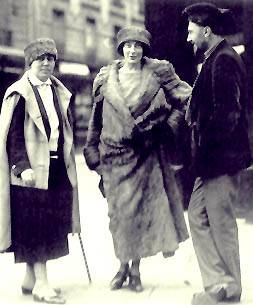PARIS IN THE 1920s
“Paris was where the twentieth century was,” said Gertrude Stein, and it must have seemed so to the Hemingway newlyweds stepping off the Leopoldina in the Christmas of 1921. The Ballet Russes showcased daring dance with backdrops of skyscrapers and automobiles, sets designed by Picasso, and music by Stravinsky. The Dadaists had exhibited their manifesto at the Palace de Fêtes. Margaret Anderson and Jane Heap had been arrested for publishing James Joyce’s “sex-thoughts” from Ulysses in the Little Review. And in Sylvia Beach’s Shakespeare and Company, a colony of expatriate writers had begun to grow.

Rue LaFayette, Paris, c. 1927
It was during this era in Paris that Ernest Hemingway truly took on his apprenticeship as a young writer. “I am teaching him how to box”, Hemingway wrote, after making the acquaintance of Ezra Pound, “and he is teaching me how to write.” Hadley was “wild” about her husband’s lean writing style. She wrote: “you eliminate everything except what’s necessary and strengthening… I’m wild over the way you pounce on a strong word and use it in the right place without any of this darned clever effect most present day writers have.”
While married to Hadley, Ernest published Three Stories and Ten Poems (1923) and In Our Time (1925). They were separated by the time The Sun Also Rises was published, but the dedication to her remained – as did his promise to pay her all of the book’s royalties.
